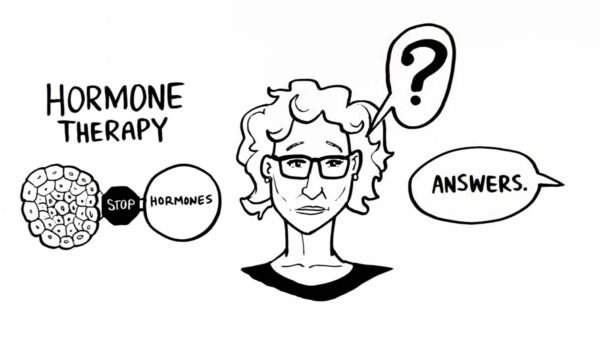Gender dysphoria is a term used to describe the distress a person may experience when their gender identity does not match the sex they were assigned at birth. While gender dysphoria can affect people of any age, it is particularly common in children and adolescents. If your child is experiencing gender dysphoria, it can be a confusing and difficult time for both you and your child. In this article, we will discuss what gender dysphoria is, how it affects children and what you can do as a parent to support your child through this process.
What is Gender Dysphoria?
Gender dysphoria is a complex condition that is still not fully understood by medical professionals. It is not the same as being gay or lesbian nor is it a mental illness. Rather, it is a condition in which an people’s gender identity differs from the sex they were assigned at birth. Gender identity refers to a person’s internal sense of being male, female or another gender. This sense of self may be influenced by biological, psychological and social factors.
Gender dysphoria can manifest in a variety of ways. Some children may express a strong desire to be the opposite gender, while others may feel uncomfortable with their gender or experience anxiety and depression as a result of their gender identity. Some children may also experience physical symptoms, such as discomfort or distress over their physical characteristics, like their voice, body hair or genitalia.
It’s helpful to note that not all children who experience gender dysphoria will continue to identify as transgender into adulthood. Some may experience a shift in their gender identity over time, while others may identify as gender nonconforming or genderqueer.
What Is Rates Of Gender Dysphoria?
- A study published in the journal Pediatrics in 2016 found that among a sample of 81,337 Minnesota adolescents, 2.7% identified as transgender or gender-nonconforming.
- Another study published in the Journal of the American Academy of Child and Adolescent Psychiatry in 2019 found that among a sample of 3,075 adolescents in California, 0.57% identified as transgender and 0.60% identified as gender nonconforming.
- In a study of transgender adults in the United States published in the American Journal of Public Health in 2016, the authors estimated that approximately 0.6% of adults in the United States are transgender.
How Gender Dysphoria Affects Children?
Gender dysphoria can have a significant impact on a child’s emotional and psychological well-being. Children with gender dysphoria may feel isolated, misunderstood and stigmatized by society. They may also experience discrimination and bullying from peers, family members and others.
Children with gender dysphoria may also experience mental health issues such as anxiety and depression. They may struggle with self-esteem and body image, particularly if they feel uncomfortable with their physical characteristics. Some children may also experience difficulties in social and academic settings, which can impact their overall quality of life.
It’s very helpful that remember that every child is unique and their experience with gender dysphoria will be different. Some children may experience significant distress, while others may be able to manage their feelings without significant disruption to their daily life.
What Can Parents Do?
If you suspect that your child may be experiencing gender dysphoria, it’s recommended to get professional help. A pediatrician or mental health professional can evaluate your child’s symptoms and provide a diagnosis. They can also help you develop a plan for supporting your child through this process.
Here are some things you can do as a parent to support your child:
- Listen To Your Child: The most important thing you can do as a parent is to listen to your child’s feelings and concerns. Ask them how they are feeling and let them know that you are there to support them. Validate their feelings and let them know that you love and accept them for who they are.
- Educate Yourself: Educate yourself on gender dysphoria and transgender issues. Learn about the experiences of other families and how they have navigated this process. You may also want to connect with local support groups or advocacy organizations for additional resources.
- Get Professional Help: Seek out medical and mental health professionals who are experienced in working with transgender children. They can help you develop a treatment plan that is tailored to your child’s needs.
- Use Your Child’s Preferred Name and Pronouns: If your child has expressed a desire to use a different name or pronouns, try to use them as much as possible. This can help validate their gender identity and make them feel more comfortable and supported.
- Support Their Expression: Encourage your child to express themselves in ways that feel authentic to them. This may include allowing them to dress and groom themselves in a way that reflects their gender identity, or participating in activities that align with their gender expression.
- Be An Advocate: Speak up for your child and advocate for their rights. This may include advocating for inclusive policies in schools and other community settings or working to combat discrimination and stigma against transgender individuals.
- Take Care Of Yourself: Supporting a child with gender dysphoria can be challenging and emotionally taxing. It’s important to take care of yourself and seek support when you need it. This may include talking to a therapist, connecting with other parents in similar situations, or taking time for self-care activities.


What Is Treatment Options For Gender Dysphoria?
- Talk Therapy: Talk therapy is an important part of treatment for gender dysphoria, as it can help people explore their gender identity and develop coping strategies. A 2018 study published in the Journal of Clinical Child & Adolescent Psychology found that gender-affirming therapy was associated with improved mental health outcomes among transgender youth.
- Hormone Therapy: Hormone therapy can be an effective treatment for gender dysphoria, as it can help people achieve physical changes that align with their gender identity. According to a 2017 study published in the Journal of Clinical Endocrinology & Metabolism, hormone therapy can result in significant changes in body composition and physical appearance, as well as improvements in mood and quality of life. But, hormone therapy does carry some risks, such as an increased risk of blood clots and cardiovascular disease.
- Surgery: Gender-affirming surgery can be an effective treatment for gender dysphoria, as it can help individuals achieve physical changes that align with their gender identity. According to a 2018 study published in the Journal of Sexual Medicine, gender-affirming surgery was associated with improvements in quality of life and mental health outcomes among transgender people. But, surgery does carry some risks, such as the risk of complications during the surgery itself and the risk of long-term complications.
- Social Transition: Social transition can be an important part of treatment for gender dysphoria, as it can help people feel more comfortable in their gender identity. According to a 2019 study published in the journal Pediatrics, social transition was associated with improved mental health outcomes among transgender youth. However, social transition can also be challenging, as it may involve facing discrimination and social stigma.
Is Therapy Work For Gender Dysphoria?
Yes, therapy can be an important part of the treatment for gender dysphoria, as it can help people explore their gender identity, develop coping strategies and address any mental health issues that may be impacting their well-being.
There are different types of therapy that may be used for gender dysphoria:
- Cognitive-behavioral therapy (CBT): CBT is a type of talk therapy that focuses on changing negative thoughts and behaviors. For people with gender dysphoria, CBT can help them identify and challenge negative thoughts and beliefs about their gender identity.
- Acceptance and commitment therapy (ACT): ACT is a type of talk therapy that focuses on acceptance of difficult emotions and values-based behavior change. For people with gender dysphoria, ACT can help them develop acceptance of their gender identity and take steps toward living in a way that aligns with their values.
- Family therapy: Family therapy can be helpful for people with gender dysphoria, particularly children and adolescents. Family therapy can help families understand and support their loved one’s gender identity and can help address any family dynamics that may be impacting the individual’s well-being.
- Group therapy: Group therapy can be helpful for people with gender dysphoria, as it provides a supportive environment in which they can connect with others who are going through similar experiences. Group therapy can help individuals develop a sense of community and reduce feelings of isolation.
According to a 2018 study published in the Journal of Clinical Child & Adolescent Psychology, gender-affirming therapy was associated with improved mental health outcomes among transgender youth. The study found that transgender youth who received gender-affirming therapy had lower rates of depression and anxiety and higher levels of self-esteem, compared to those who did not receive gender-affirming therapy.



What Is Hormone Therapy Options For Gender Dysphoria?
Hormone therapy is a common treatment option for people with gender dysphoria who wish to medically transition. Hormone therapy can help people develop physical characteristics that are more congruent with their gender identity, which can lead to improved well-being and quality of life.
For transgender men (people assigned female at birth who identify as male), hormone therapy typically involves testosterone. Testosterone therapy can lead to changes such as increased muscle mass, facial and body hair growth, deepening of the voice and cessation of menstrual cycles.
For transgender women (people assigned male at birth who identify as female), hormone therapy typically involves estrogen and sometimes an anti-androgen medication. Estrogen therapy can lead to changes such as breast development, a redistribution of body fat to a more feminine pattern and a decrease in body hair growth.
Hormone therapy is usually administered through injections, topical creams or pills. The dosing and administration of hormone therapy will vary depending on personal factors such as age, medical history and personal preferences.
But hormone therapy is not without risks and individuals considering hormone therapy should undergo a thorough medical evaluation and be monitored regularly by a healthcare provider. Possible side effects of hormone therapy can include changes in mood, libido and fertility, as well as increased risk for certain health conditions such as blood clots and cardiovascular disease. But, the risks associated with hormone therapy are generally low when it is administered under the guidance of a qualified healthcare provider.
Besides that hormone therapy, people with gender dysphoria may also undergo other medical procedures as part of their transition, such as gender-affirming surgeries. The treatment options for gender dysphoria should be personalized based on the needs and goals of the individual and should be discussed with a healthcare provider who is knowledgeable about transgender healthcare.

